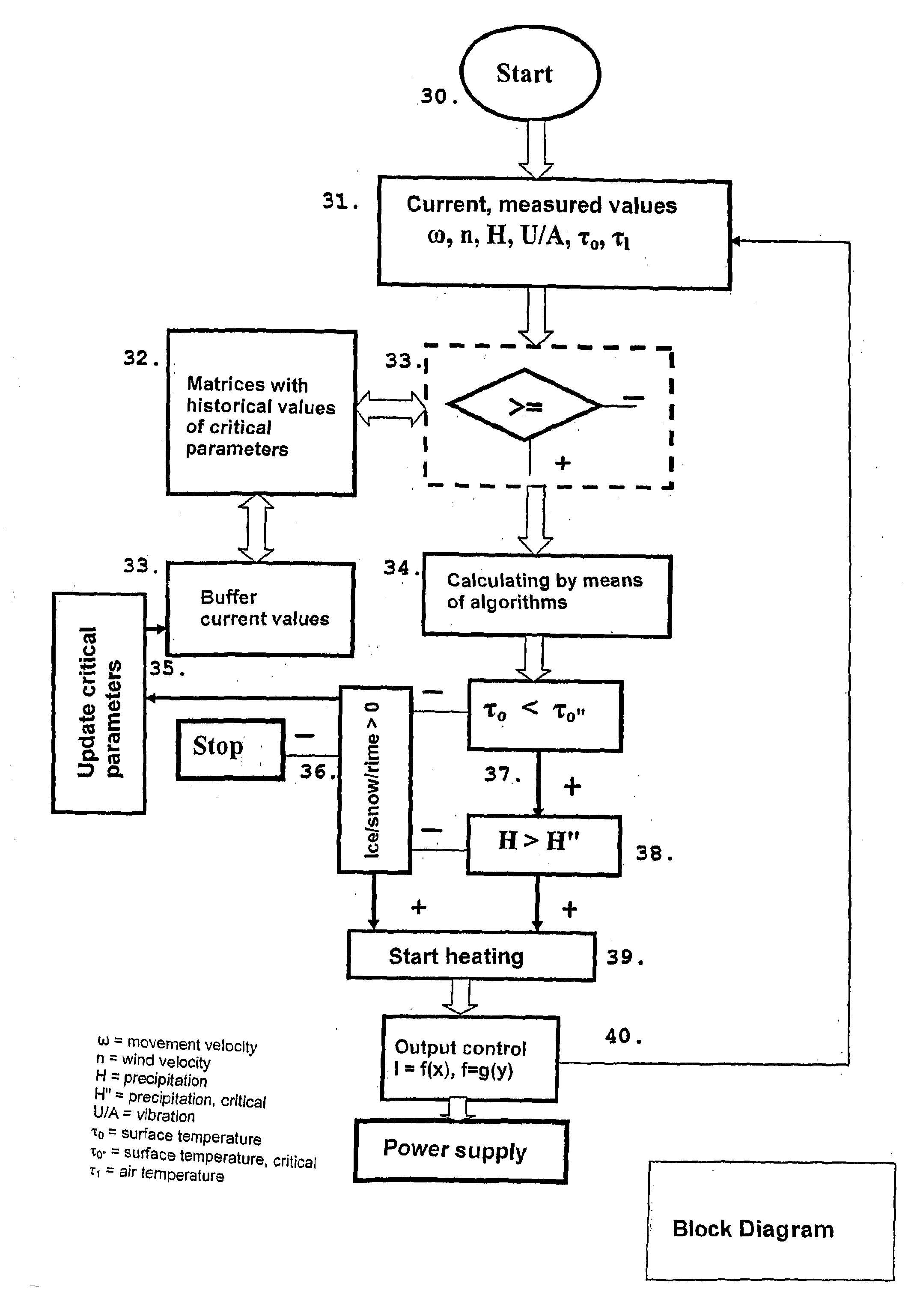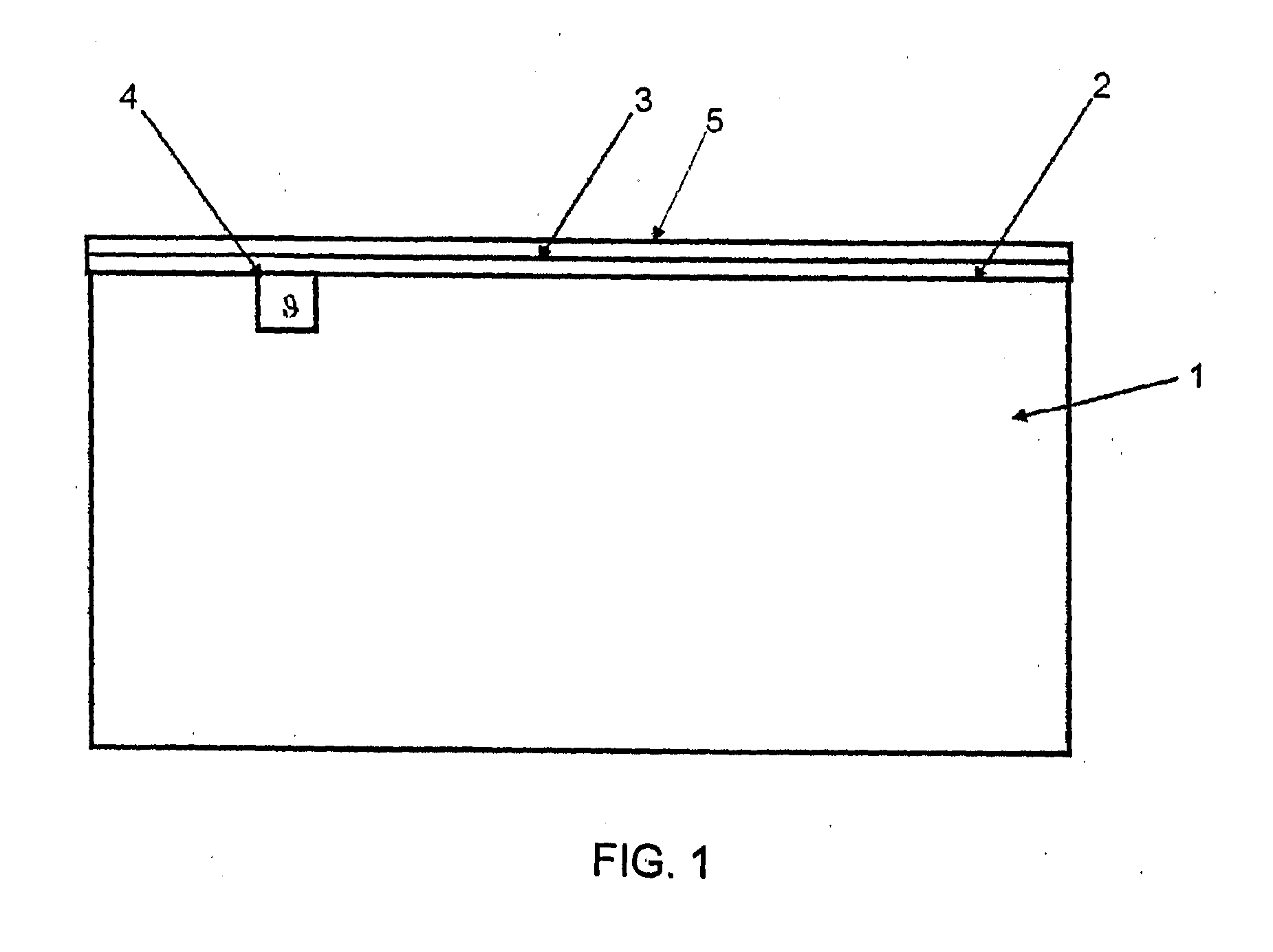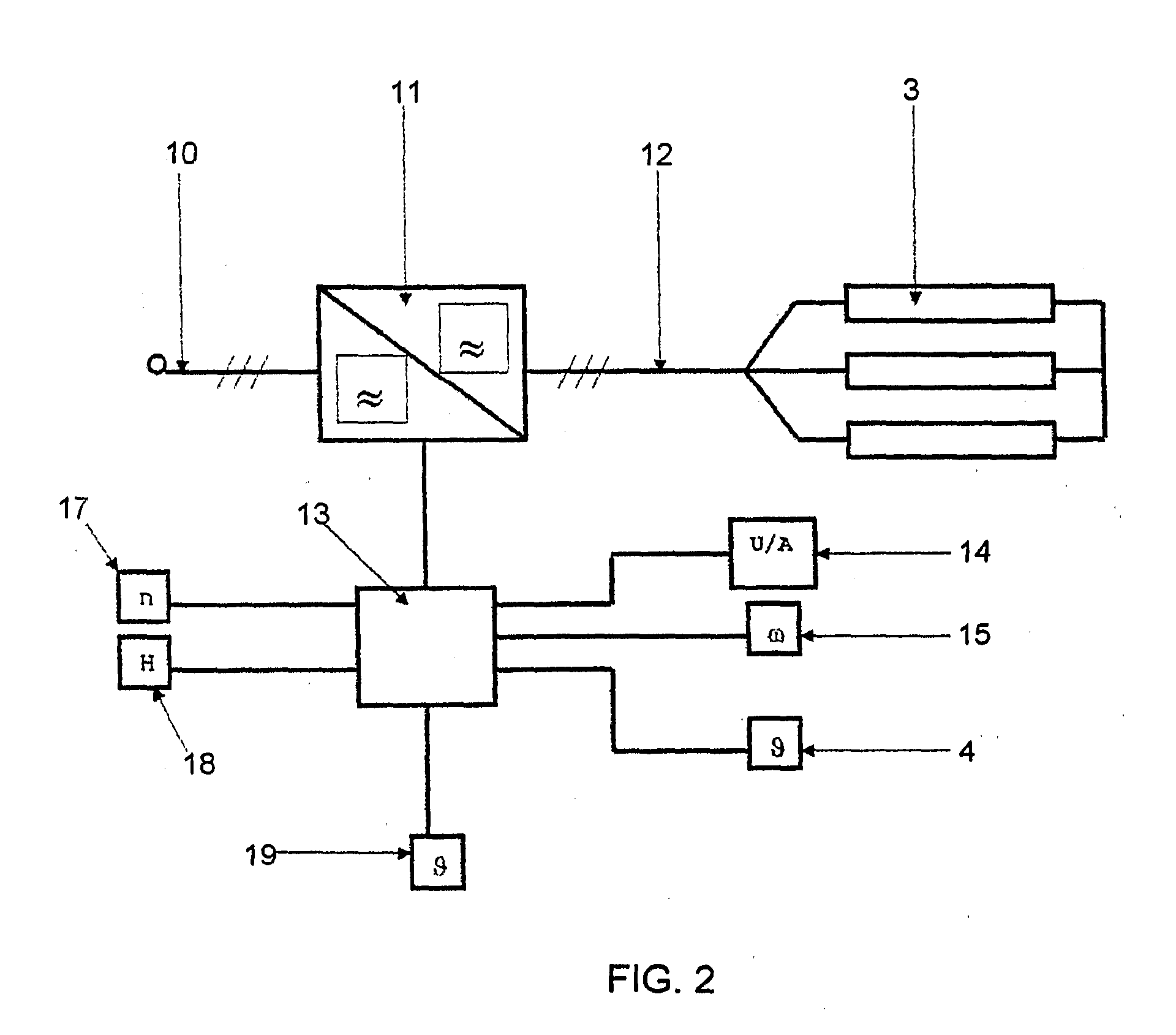Method and Means for Controlling Power Delivery to an Equipment for Counter-Acting Formation of Ice or for Removing Snow/Ice on a Constructional Element
a technology of construction elements and power delivery methods, which is applied in the direction of motors, engine fuctions, comparison tables, etc., can solve the problems of reducing the earnings associated with installation, reducing the viability of wind power generation investment, and increasing costs, so as to achieve favorable solutions, improve energy efficiency, and improve the effect of efficiency
- Summary
- Abstract
- Description
- Claims
- Application Information
AI Technical Summary
Benefits of technology
Problems solved by technology
Method used
Image
Examples
Embodiment Construction
will be given, including a detailed review of advantageous embodiments thereof, with reference to the attached drawings, in which
[0027]FIG. 1 shows a section through a part of a constructional element, in particular a wind turbine wing, with metal foil applied for heating,
[0028]FIG. 2 shows a schematic of the controller used for adjusting the supply of electrical power to the metal foils, and
[0029]FIG. 3 is a block diagram showing the control method according to an embodiment of the invention.
DETAILED DESCRIPTION OF EMBODIMENTS OF THE INVENTION
[0030]Initially, it should be noted that while the description is based on wind turbines from which ice must be removed, the invention also will find application in other areas, such as for aeroplane wings, chopper rotors, and other outdoor structures, in particular moveable structures, for example, so reference is made generally to a “structure” and a “constructional element” when the invention is set forth in its most general form. Even so, ...
PUM
 Login to View More
Login to View More Abstract
Description
Claims
Application Information
 Login to View More
Login to View More - R&D
- Intellectual Property
- Life Sciences
- Materials
- Tech Scout
- Unparalleled Data Quality
- Higher Quality Content
- 60% Fewer Hallucinations
Browse by: Latest US Patents, China's latest patents, Technical Efficacy Thesaurus, Application Domain, Technology Topic, Popular Technical Reports.
© 2025 PatSnap. All rights reserved.Legal|Privacy policy|Modern Slavery Act Transparency Statement|Sitemap|About US| Contact US: help@patsnap.com



